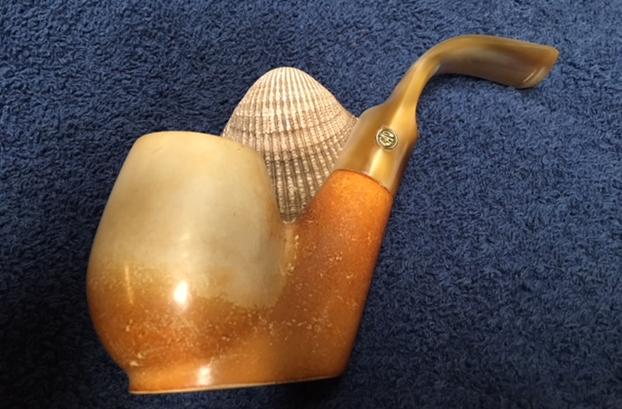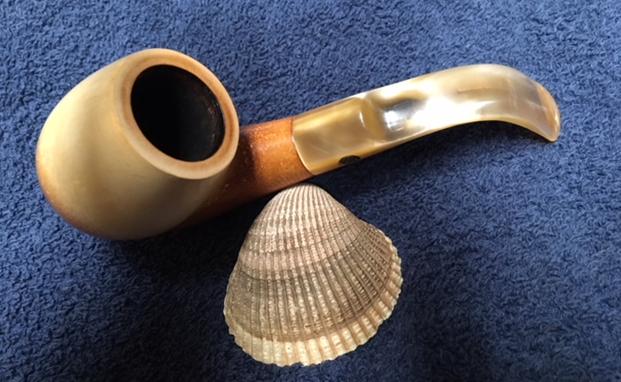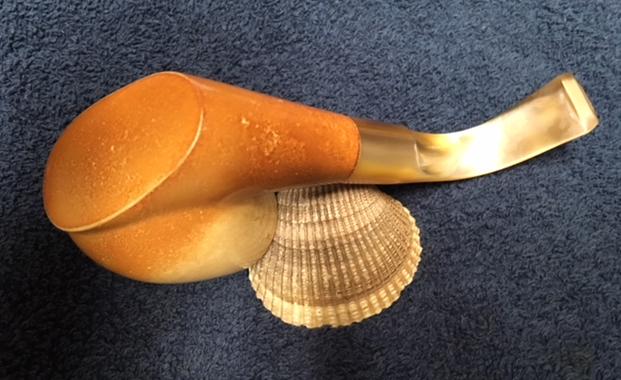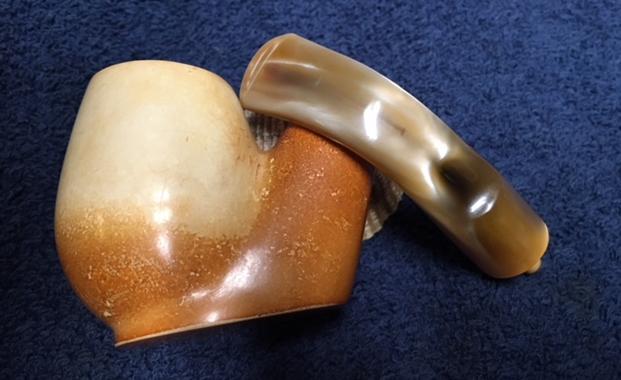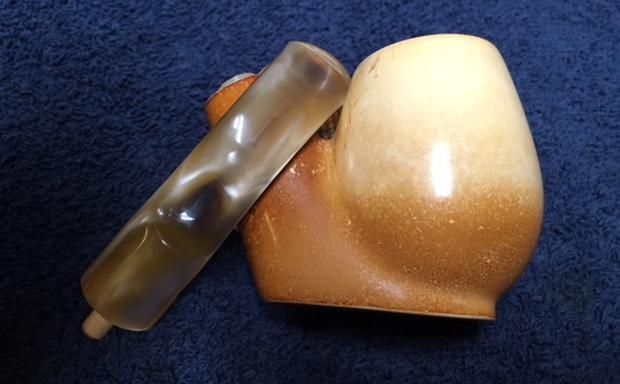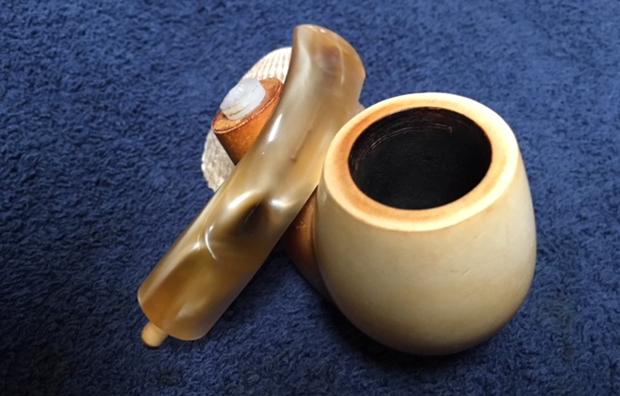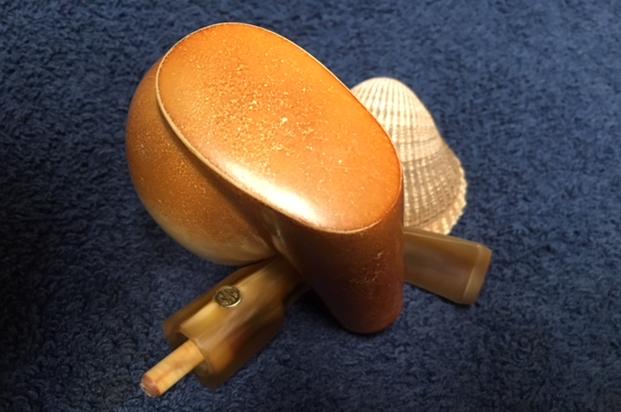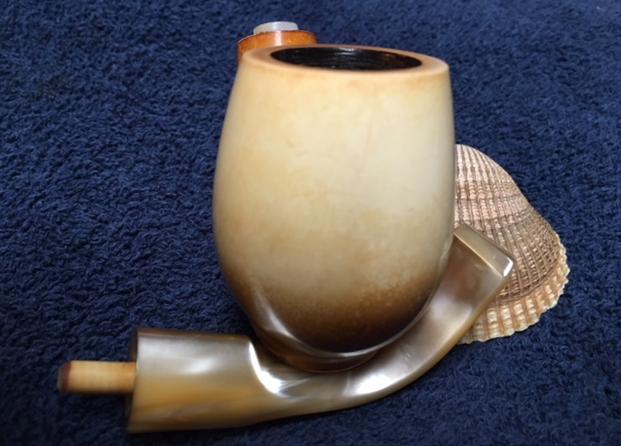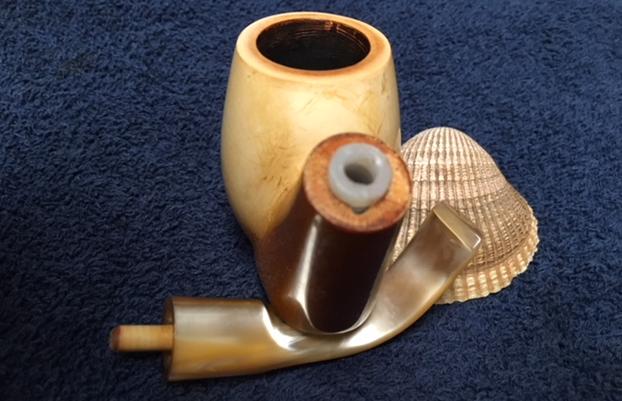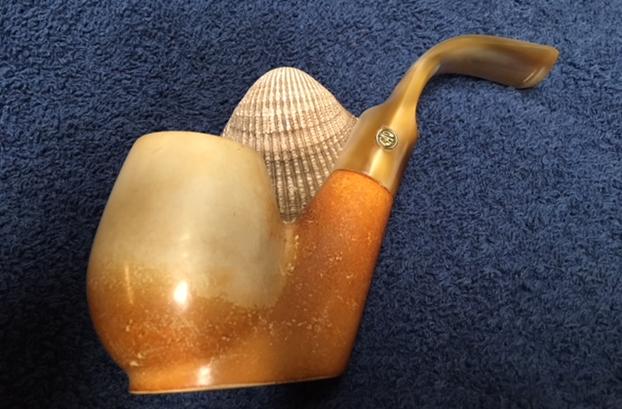Blog by Steve Laug
Jeff sent me this CAO Meerschaum Bent Sitter not too long ago. I am guessing it is from the 80s as it has that particular style of bent, thick Lucite stem. The shape is similar to the teacup shape that I have seen in briar pipes. Others might call it an egg shape. The finish is quite clean. The egg portion of the bowl is colouring toward the bottom of the bowl and the base. The base and the shank are more of a butterscotch colour. The rim top had some lava on the back edge of the bowl that had overflowed from the cake in the bowl. The stem is a swirled pearl colour varying from golds to creams colours. The button and slot itself were clean. There was some light tooth chatter on both sides of the stem near the button and there were light tooth marks as well. Jeff took some photos of the pipe from various angles before he started the cleanup.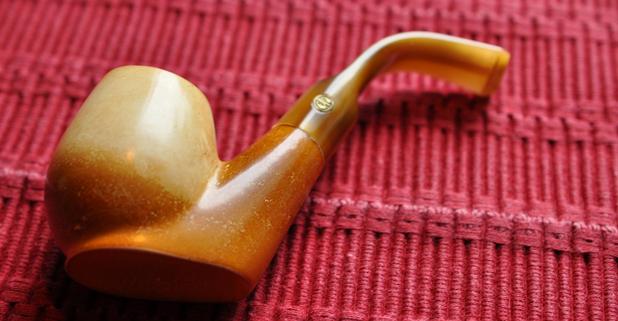
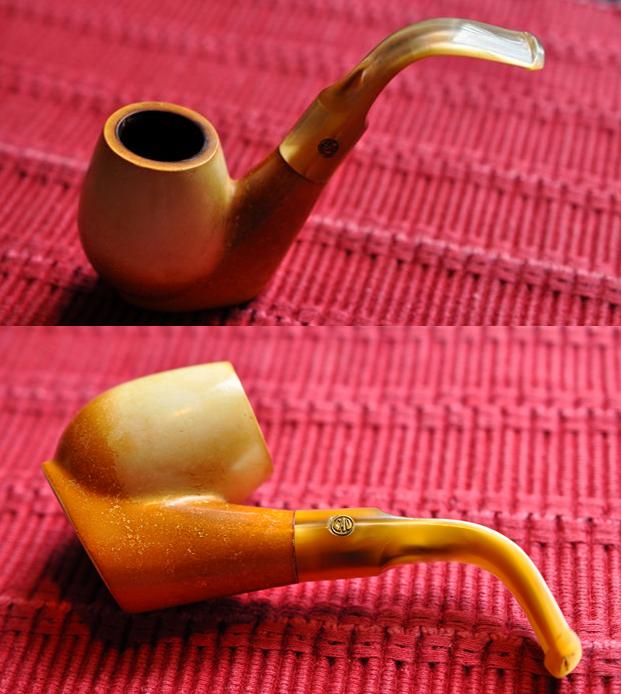
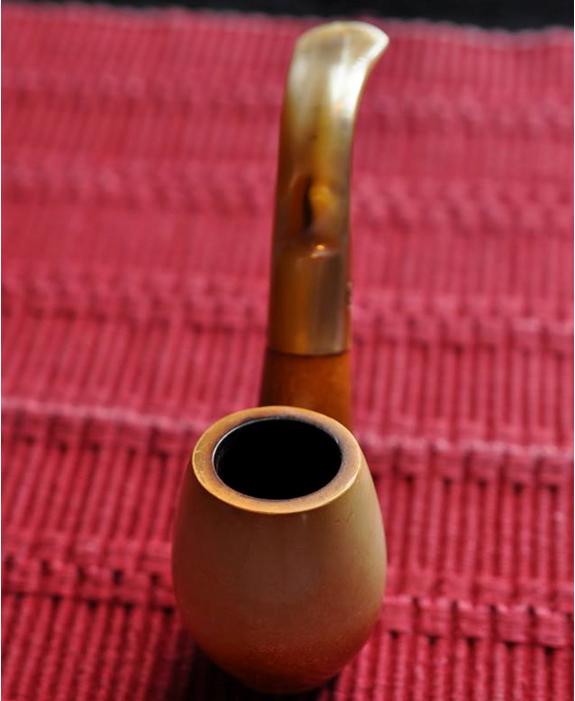
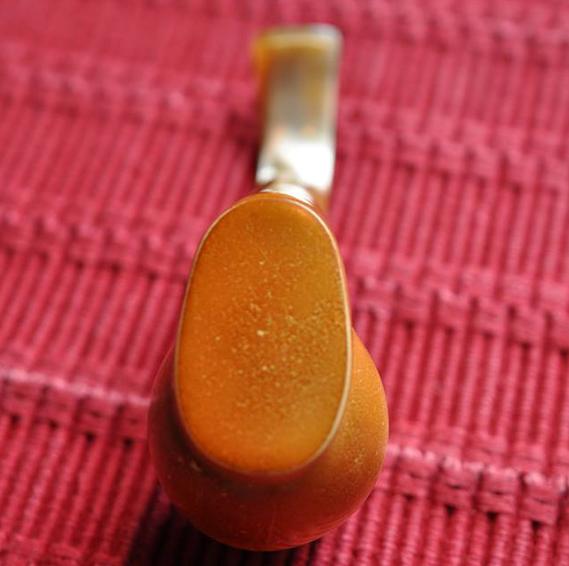 He did his usual thorough cleanup of the pipe. He reamed the bowl with a Savinelli Fitsall Pipe Knife to scrape out all of the cake. He scrubbed the internals of the pipe with pipe cleaners, cotton swabs and alcohol. He scrubbed the exterior with Murphy’s Oil Soap and a tooth brush to remove the grime in the finish of the bowl. He was able to get much of the lava off the top of the rim. He rinsed the pipe with warm water to remove the soap and dried it off with a soft cloth. I took photos of the pipe when I received it to show its general condition. It is an interesting pipe.
He did his usual thorough cleanup of the pipe. He reamed the bowl with a Savinelli Fitsall Pipe Knife to scrape out all of the cake. He scrubbed the internals of the pipe with pipe cleaners, cotton swabs and alcohol. He scrubbed the exterior with Murphy’s Oil Soap and a tooth brush to remove the grime in the finish of the bowl. He was able to get much of the lava off the top of the rim. He rinsed the pipe with warm water to remove the soap and dried it off with a soft cloth. I took photos of the pipe when I received it to show its general condition. It is an interesting pipe.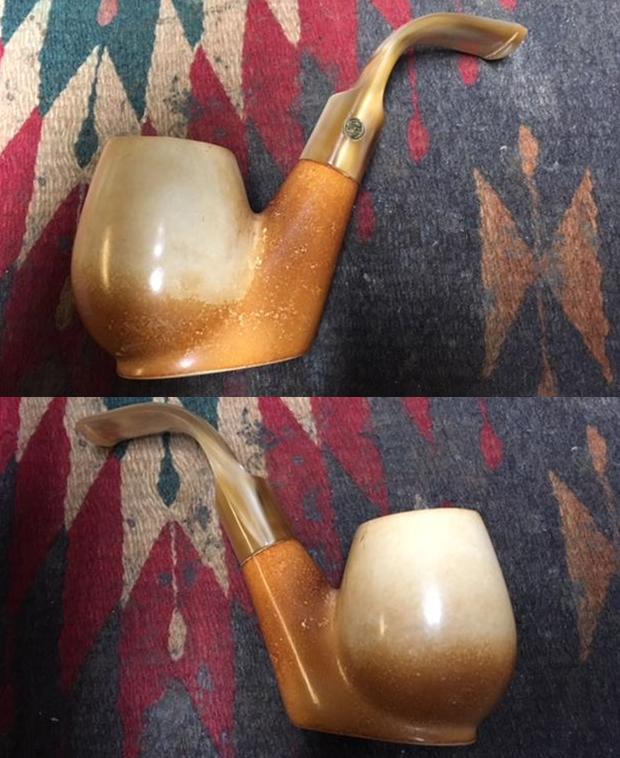
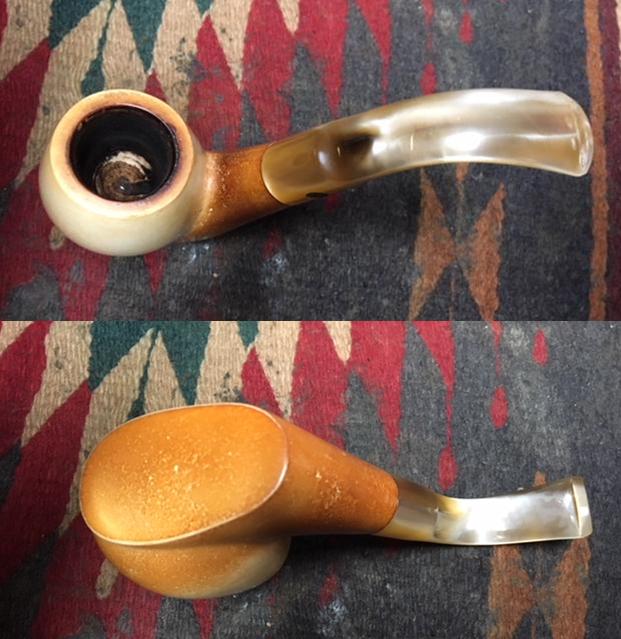 I took close up photos of the bowl, rim and the tooth marks on both sides of the stem just ahead of the button. The first photo below shows the clean bowl and rim. There are some small remnants of lava on the rim but the edges of the bowl are clean. The second and third photos show the tooth marks. They were not very deep but were visible. The fourth photo shows the circular CAO brass medallion on the left side of the saddle stem.
I took close up photos of the bowl, rim and the tooth marks on both sides of the stem just ahead of the button. The first photo below shows the clean bowl and rim. There are some small remnants of lava on the rim but the edges of the bowl are clean. The second and third photos show the tooth marks. They were not very deep but were visible. The fourth photo shows the circular CAO brass medallion on the left side of the saddle stem.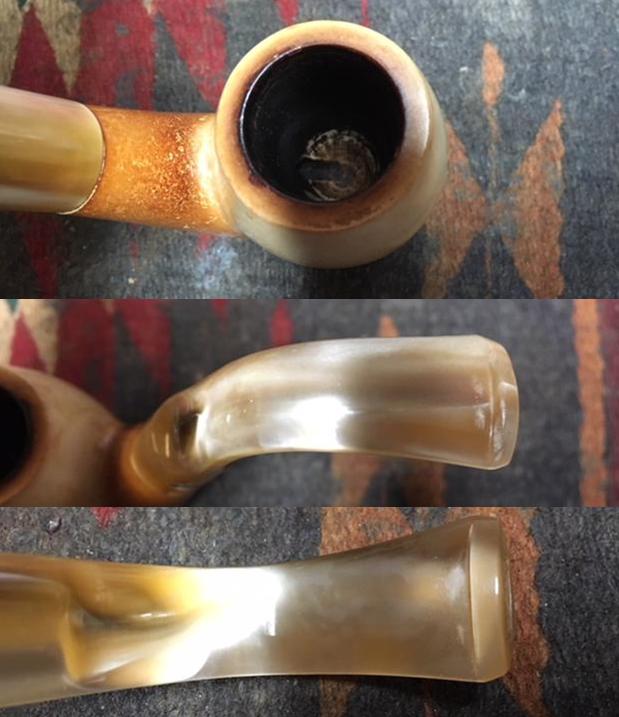
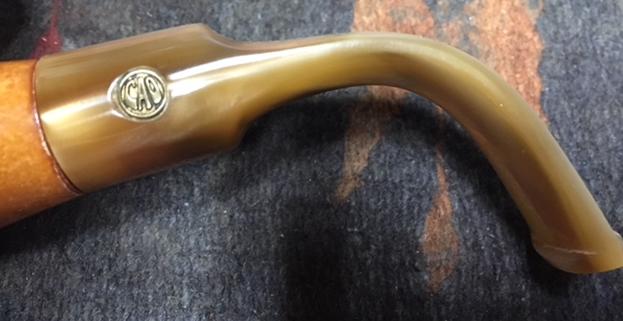 I removed the stem from the bowl. At first I thought the tenon was threaded, but I knew that generally CAO Meerschaum pipes had a push stem. As I examined it I could see that the Delrin insert had unscrewed from the shank of the pipe and that the push tenon was inside of it. I screwed the stem back on the pipe and turned the stem the opposite direction and it came out easily. The photos below show both views of the stem and tenon.
I removed the stem from the bowl. At first I thought the tenon was threaded, but I knew that generally CAO Meerschaum pipes had a push stem. As I examined it I could see that the Delrin insert had unscrewed from the shank of the pipe and that the push tenon was inside of it. I screwed the stem back on the pipe and turned the stem the opposite direction and it came out easily. The photos below show both views of the stem and tenon.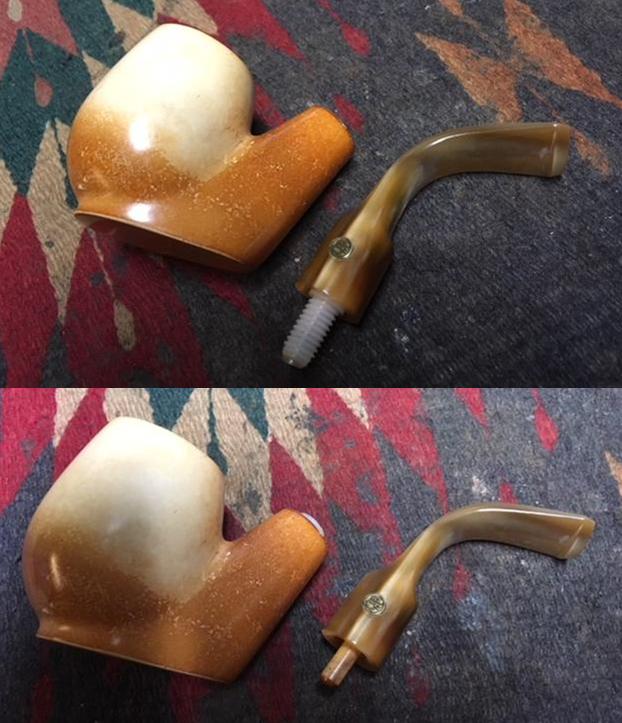 I polished the rim top and bowl with micromesh sanding pads. I wet sanded with 1500-2400 grit pads and wiped the bowl down with a damp cloth after each pad. I dry sanded with 3200-12000 grit pads. Again, I wiped it down with a damp cloth. I buffed it with a microfiber cloth.
I polished the rim top and bowl with micromesh sanding pads. I wet sanded with 1500-2400 grit pads and wiped the bowl down with a damp cloth after each pad. I dry sanded with 3200-12000 grit pads. Again, I wiped it down with a damp cloth. I buffed it with a microfiber cloth.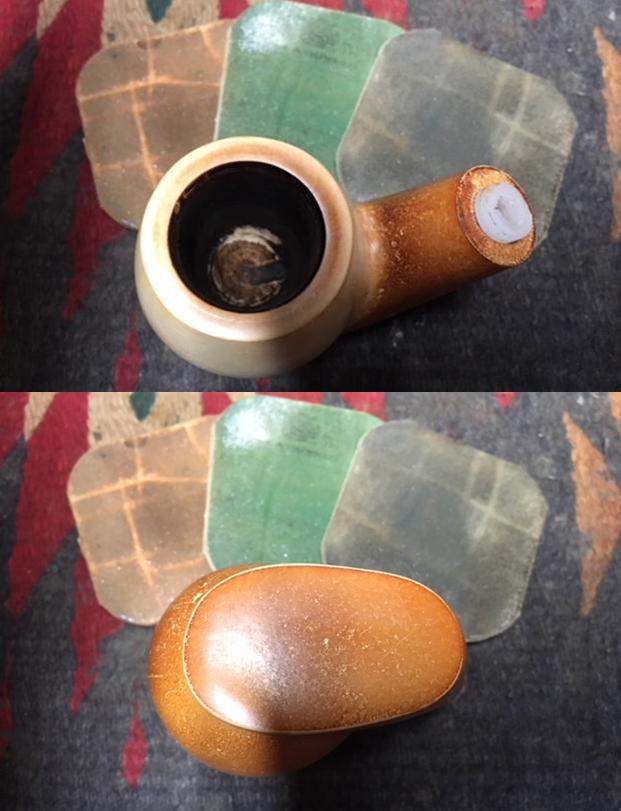
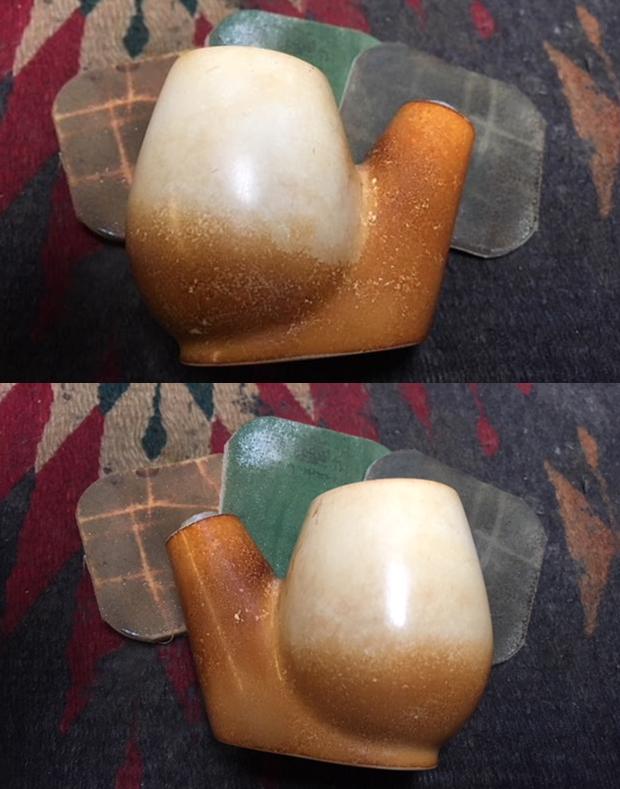

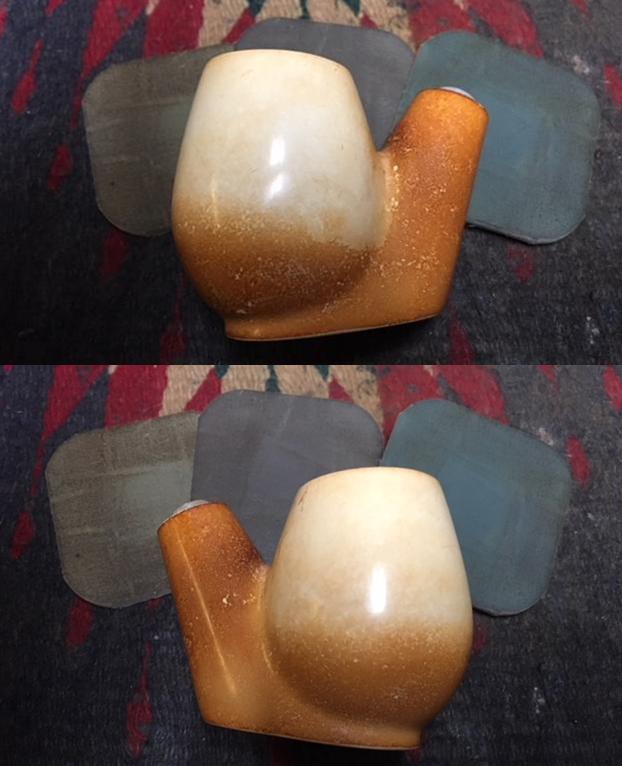
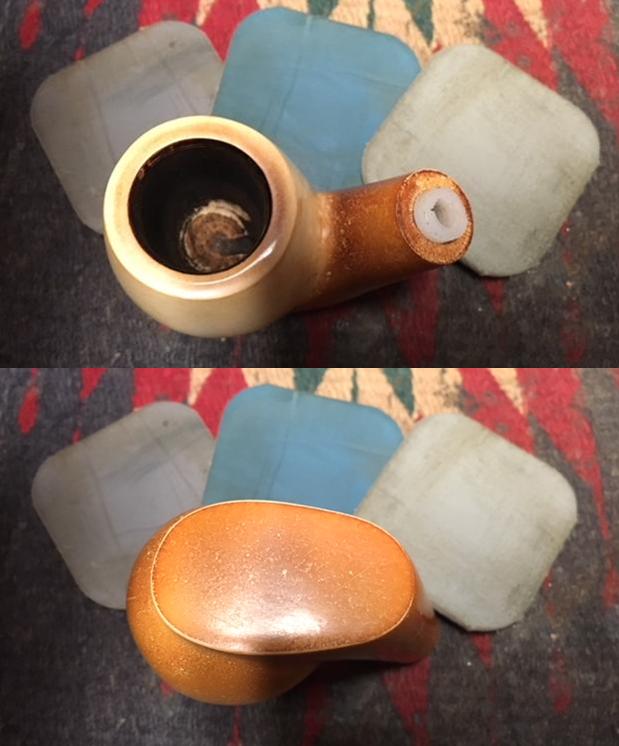
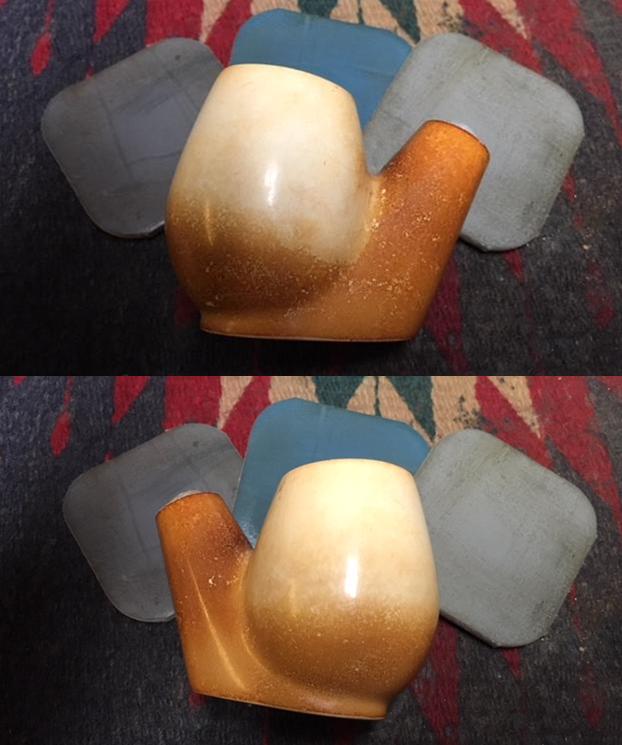 I sanded out the tooth marks on the stem with 220 grit sandpaper until they were not visible any longer.
I sanded out the tooth marks on the stem with 220 grit sandpaper until they were not visible any longer.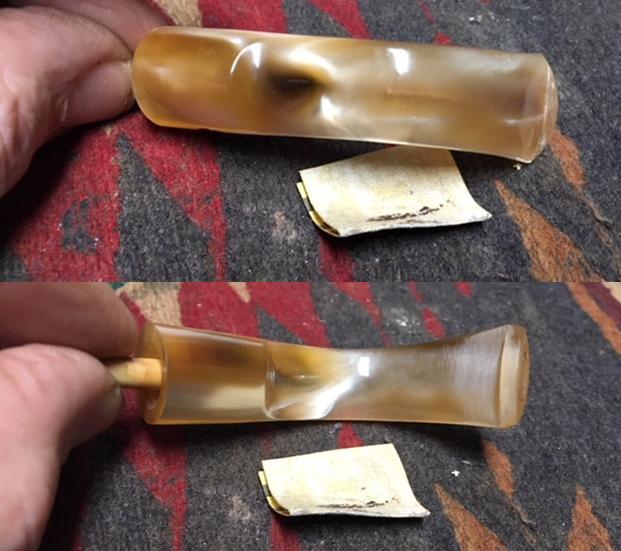 I ran a few pipe cleaners with alcohol through the stem to clean out the sanding dust that had gotten into the airway. I cleaned out the slot with the pipe cleaners to remove grime from the corners.
I ran a few pipe cleaners with alcohol through the stem to clean out the sanding dust that had gotten into the airway. I cleaned out the slot with the pipe cleaners to remove grime from the corners.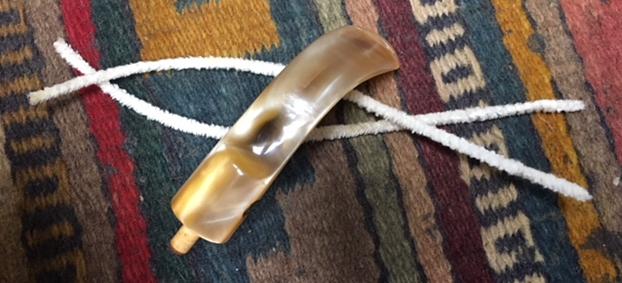 I polished the scratches left behind by the sandpaper with micromesh sanding pads. I wet sanded with 1500-2400 grit pads and dry sanded with 3200-12000 grit pads. I wiped it down with a damp cloth after each pad.
I polished the scratches left behind by the sandpaper with micromesh sanding pads. I wet sanded with 1500-2400 grit pads and dry sanded with 3200-12000 grit pads. I wiped it down with a damp cloth after each pad.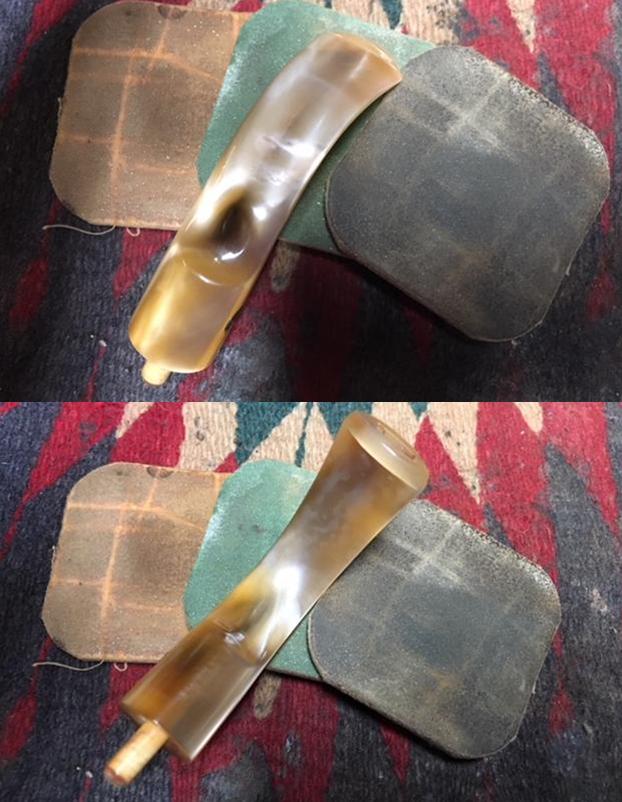
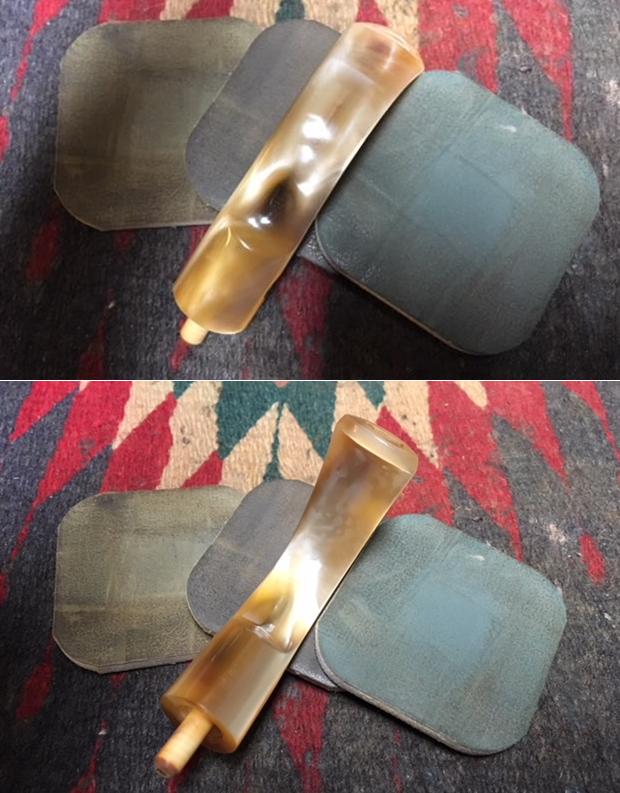
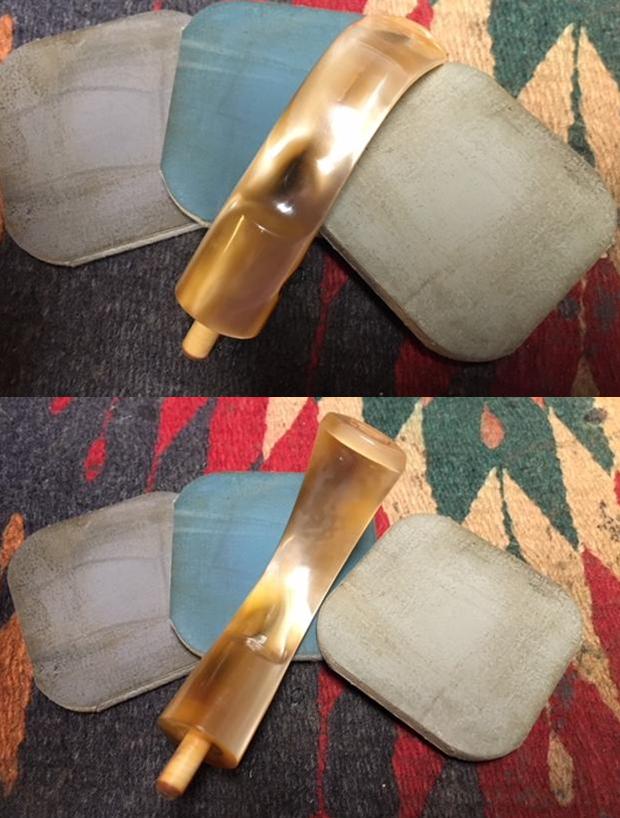 I put the stem back on the bowl and lightly buffed it on the buffing wheel using Blue Diamond to lightly polish it. I buffed the stem to raise the gloss on the acrylic. I gave the stem multiple coats of carnauba wax. I buffed the entire pipe with a clean buffing pad to raise the shine. I hand buffed it with a microfiber cloth to deepen the shine. The finished pipe is shown in the photos below. The variegated colours of the meerschaum progressing from a golden brown to a light tan colour go well with the rich variations of the brown, gold and tan acrylic stem. The polish and the reworking of the stem material left this a beautiful looking pipe. I will be posting this pipe on the rebornpipes store very soon. It should make a nice addition to the next pipeman’s rack and in purchasing it you can add your story to the ongoing story of the pipe. The dimensions of the pipe are: Length: 6 inches, Height: 2 inches, Outside Diameter: 2 1/4 inches, Diameter of the chamber: 3/4 inch. If you are interested in purchasing this pipe email me at slaug@uniserve.com or send me a message on Facebook. Thanks for walking through the restoration with me.
I put the stem back on the bowl and lightly buffed it on the buffing wheel using Blue Diamond to lightly polish it. I buffed the stem to raise the gloss on the acrylic. I gave the stem multiple coats of carnauba wax. I buffed the entire pipe with a clean buffing pad to raise the shine. I hand buffed it with a microfiber cloth to deepen the shine. The finished pipe is shown in the photos below. The variegated colours of the meerschaum progressing from a golden brown to a light tan colour go well with the rich variations of the brown, gold and tan acrylic stem. The polish and the reworking of the stem material left this a beautiful looking pipe. I will be posting this pipe on the rebornpipes store very soon. It should make a nice addition to the next pipeman’s rack and in purchasing it you can add your story to the ongoing story of the pipe. The dimensions of the pipe are: Length: 6 inches, Height: 2 inches, Outside Diameter: 2 1/4 inches, Diameter of the chamber: 3/4 inch. If you are interested in purchasing this pipe email me at slaug@uniserve.com or send me a message on Facebook. Thanks for walking through the restoration with me. 